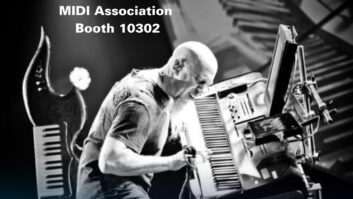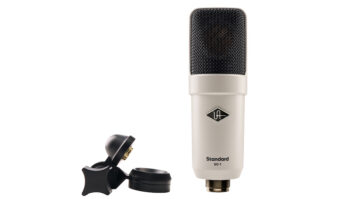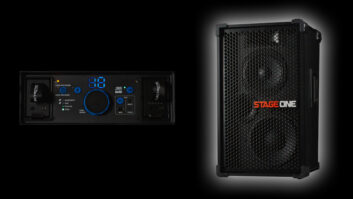Back in the days when children walked to the school bus and phone calls were “dialed” by making and breaking switch contacts, there existed a serial protocol or two. Geeky folk used them for simple communication tasks, like connecting a primitive peripheral to a computer or controlling some industrial process. That serial port has grown up, and, at least in the consumer arena, the role is now being filled by USB, the Universal Serial Bus.
The five-year-old USB standard, middle-aged by computer standards, has gotten some recent injections of the same technology that keeps Keith Richards running like a well-oiled clock. Though Version 2.0 of the standard has a design data rate of 480 Mbits/second, don’t think that you’ll always see that performance level. More on that point in a bit, but, for now, let’s marvel at the kaleidoscope of USB stuff that’s appeared in the marketplace since “Bitstream” last visited it back in August of 2000.
Generally, USB devices fall into either the storage, utility or I/O category. Let’s start with what I call the utility category of products, including those that convert your legacy, serial, parallel, PS/2, ADB or CardBus ports to/from USB, power-management products such as those that restart your computer when it goes catatonic, or USB-equipped UPSs (uninterruptable power supplies) that put your computer gently to bed when the power utility does an Enron.
There’s been a lot of buzz about Bluetooth lately, and, though it’s mostly hype, you too can participate in your own nano-network with 3Com’s USB-to-Bluetooth converter. More mundane but definitely more useful are those products that back up your machine before the inevitable crash and burn. Toward that end, wouldn’t a no fuss, no muss backup solution be nice? How ’bout CMS Peripherals’ ABS line: Stand-alone, USB 2.0 hardware and embedded software combos that, once connected to either Mac or Win, automatically initiate a full or incremental backup.
From the I/O arena, we have audio and video as well as USB’s traditional turf, human-interface products like keyboards and mice to choose from. Need to get analog audio or video into or out of your computer? No problem! Need a haptic joystick to fully appreciate your new flight simulator? No problem! Need a better stock tip than shares of @Home? Sorry, wrong magazine!
On to digital audio I/O gear… There are several MI (Musical Instrument, aka semipro) products out there that address the budget end of the market or simply don’t require a whole lot of bandwidth to do their job. An example of the former is MOTU’s cross-platform 824. With ADAT sync in, phantom power and the ability to chain up to four units for 72 channels of sample-accurate 48/24, the price and performance meet most of bubba’s needs. Not to be outdone, Ego Systems also has most I/O bases covered with a complete line of ADAT and analog-conversion products to choose from. Swissonic’s AD96 is yet another example of USB audio I/O. It joins Emagic’s EMI 2|6 in the increasingly crowded USB-for-MI market. Performing journeyman’s duty on the field recording front is the rugged, bus-powered USBPre from Sound Devices. For those who can’t seem to scrape up enough dough to splurge even on those cost-effective entries, Griffin Technology provides two choices for analog audio I/O, their straight-up iMic and the fancier but still inexpensive PowerWave.
Along with its 824, MOTU has a USB-attached synchronizer, the MOTU MIDI Timepiece A/V. Because MIDI is a low-speed protocol, many vendors have MIDI interfaces with USB. Edirol has several nice USB-equipped solutions for the electronic musician that combine digital audio/sound card I/O functions with MIDI. Enthusiasts just getting into production may like Korg/ToneWorks’ new PXR4 with a USB spigot for song transfers. Another appropriate match is USB and control surfaces. Event’s EZbus and Tascam’s US-428, and baby brother US-224s, wrap control and I/O into neat blue packages. Steinberg provides the Houston controller for their VST engine, while Contour Design’s ShuttlePRO and Midiman’s Surface One fit the bill for pure control surface satisfaction. Surveying incroachment into their domain, JLCooper continues the lead role as Control Surface King. They have, along with MIDI-to-USB mapping software, a wide range of modular hardware solutions from basic to elaborate.
Even consumer audio isn’t immune to the lure of USB’s low cost. Onkyo’s DW-S500 all-in-one stereo system ships with USB audio I/O. They also sell USB alternatives to the traditional sound card, which includes, along with the traditional AD/DA for computer I/O, a microphone input, stereo RCA analog input, and one AES Type II I/O with optical and unbalanced connectors alone with a headphone output. Note that all of the audio-related gear I’ve mentioned has USB 1.1 ports. As USB 2.0 silicon drops in price, audio vendors will have the incentive to justify adding that increased performance to their bragging rights.
For storage, where the large capacity of modern IDE drives really benefit from the throughput of USB 2.0, you can take your pick of gazillions of rotating media offerings. Affordable pricing on IDE-to-USB 2.0 bridge hardware makes it a snap to grab a sexy case and integrate a product. WiebeTech has taken the minimalist approach with their USB (and 1394) DriveDock line, a must-have for any techie’s tool kit. Some, like Minds@ work’s Digital Wallet, even include autonomous operation.
Though there are lots of slow storage products based on USB 1.x, CompuCable, along with DAT Optic, LaCie, New Motion Technology, QPS and others, have taken the bull by the horns and introduced USB 2.0 hard drives. A bonus feature to these products is that they also carry 1394 ports.
At the time of writing, not even Intel, champion of USB 2.0, is shipping a motherboard with USB 2 built-in. You’d have to be content with the 12-Mbits-per-second speed of classic USB rather than the 480 Mbps that USB 2.0 holds forth. California Drives, in addition to CMS Peripherals, Keyspan, Maxtor, Orange Micro and others, offers low-cost, add-in USB 2.0 HBAs, which quench any thirst for Version 2 speed.
A relatively new storage alternative, a variant of flash memory readers, are stand-alone, solid-state memory products, exemplified by DiskOnKey’s flash memory fob. It’s small enough to hang on your key chain and performs flawlessly across all common platforms without driver installation. With an embedded OS, the DiskOnKey product probably qualifies as the world’s smallest NAS, or network-attached storage.
With present capacity around 128 MB, flash fobs aren’t capacious enough for big storage demands, just yet anyway. Though you can’t expect to carry your entire mix date or MP3 library around on one, look for capacity in this category to double and then double again in the near future. Here, as in other product classes, USB 2.0 support is not assured. M-Systems, the parent company of DiskOnKey, is typical of the cautious approach of many CE vendors. Blaine Phelps, worldwide marketing director at M-Systems, says, “The company plans on implementing USB 2.0 by Q3 of 2002. At this time, it’s really a debate of whether or not USB 2.0 will be implemented by our partners, at which time we will deliver products.”
Now is the time when I inject that caveat brought up earlier: Don’t expect anywhere near the advertised throughput. USB, aka Unquestionably Slow and Braindead, is not a peer-to-peer protocol. It requires hand holding from the host for most everything. In addition, V. 2 devices cannot maintain their speed advantage on a bus shared with V. 1 devices. The always useful hub, a necessity for any complex installation, provides some relief. Julie Moeller, VP of BizDev at Orange Micro, confirmed an interesting feature of their USB 2.0 hub: Each port runs at the maximum speed of the device on that port. Because the slowest device in the chain dictates the speed for all devices on that chain, think carefully before daisy-chaining USB devices.
Despite my kvetching, USB has one advantage that I can think of: self-discovery of newly attached devices. While the 1394 protocol also supports self-discovery, both Win and Mac OS fail to take advantage of it at present. Which brings us to operating systems. As mentioned in February, Microsoft has shifted its emphasis away from USB to focus on 1394 as the high-speed bus of choice. Still, XP provides basic support for USB 2.0 right out-of-the-box. As for Apple, OS 10.1 also has solid USB 1.x support, but USB 2.0 is still lacking.
One last thing: Though I’m not sure how to categorize it, Lego’s MindStorms ROBOLAB infrared transmitter cuts the leash that prevents your robotic tape operator from getting serious work done. Now that’s what I call progress!
OMas ([email protected]), having made substantial progress of late on a client’s DAM project, has been decompressing via the mesmerizing Groboto. For pertinent links and back issues on USB, go towww.seneschal.net.







